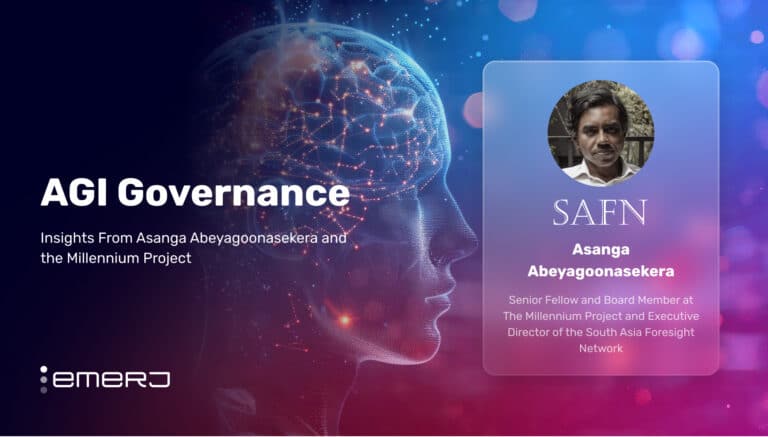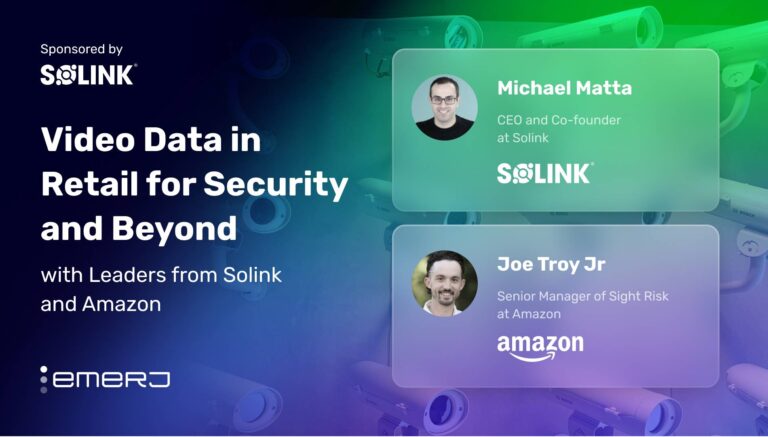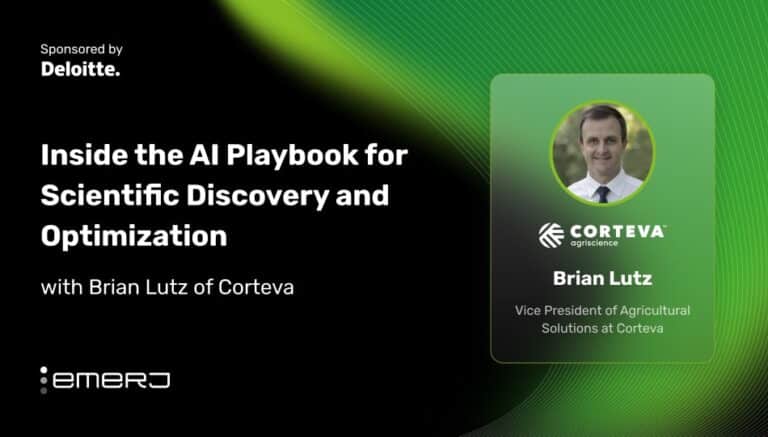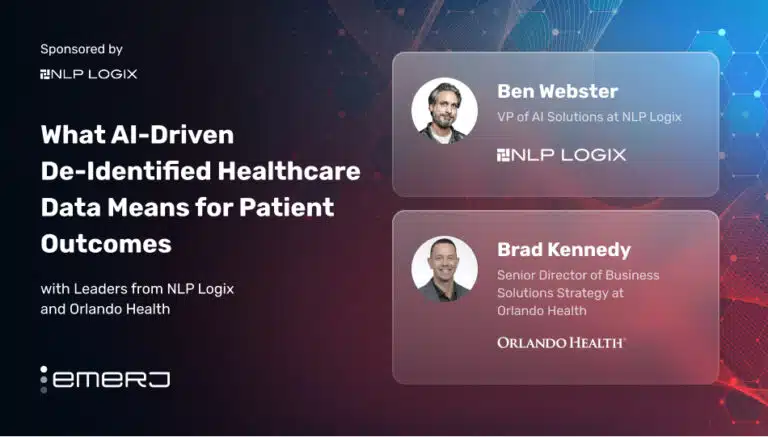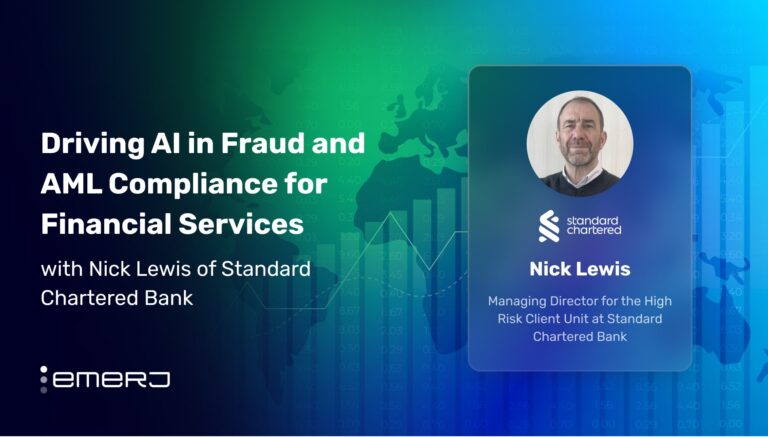Finding effective AI projects in the enterprise can be a challenge – but ensuring that AI projects lead to a long-term advantage for the organization can be even harder. Too many dollars in AI investment still end up going to surface-level projects that can’t deliver, while a growing number of AI projects are reaching maturity.
Though companies should not mold their entire business strategy around AI alone, smart enterprises should not be strategizing their long-term visions without some consideration of AI. Moreover, boards, executives and investors need to understand that, despite the initial uncertainty and turbulence, organizations must move quickly throughout the early ‘discovery’ phase of AI development.
The good news is that there is plenty of incentive — read: ROI — to implement AI into an enterprise. Consider the following: a 2021 report from Accenture found that the “share of companies’ revenue that is ‘AI-influenced’ more than doubled between 2018 and 2021 and is expected to roughly triple between 2018 and 2024.” We at Emerj set out to find enterprise leaders who have implemented tangible, successful AI strategies and feature them in a podcast series focused on lessons from their experiences.
In this article summary, we follow the embed of each episode with highlights of the most actionable insights from our expert guests that you can initiate from your desk starting today:
- Why AI buy-in is critical to project success
- The importance of early and imperfect AI strategy
- Focus on the end-user
- Why the AI project that you don’t do is just as important as the project you do.
- How the handling and collecting of data ties into AI strategy-building.
We begin our analysis with General Manager of AI and Innovation at Microsoft David Carmona discussing the process by which a legacy tech brand like Microsoft set about increasing its organizational AI fluency.
Building an Enterprise AI Strategy – Advice from Leaders
EPISODE 1 – Boosting AI Fluency to Build a Strategy
Guest: David Carmona – General Manager of AI and Innovation, Microsoft
Our series kicks off with Microsoft’s General Manager of AI and Innovation, David Carmona. David discusses Microsoft’s challenges with AI strategy and what the company learned from its mistakes.
An AI plan for the finance department was presented to Microsoft’s leadership, and while the framework was “pretty” and “appeared to be perfect,” the project still failed. The reason? Non-technical employees didn’t have any conceptual knowledge of AI. Microsoft ended up scrapping the entire project and starting from scratch and implementing a more “bottom-up” approach.
Implementing an AI strategy with frontline employees in mind gives companies, especially at Microsoft’s scale, the best chance possible for successful outcomes. By encouraging AI buy-in from employees on the ground floor of the business, so-called “perfect” projects actually stand a chance to see results.
EPISODE 2 – Approaching Strategy Top-Down and Bottom-Up
Guest: Brett Greenstein – Partner, PriceWaterhouseCoopers
In our second featured episode, we chat with Brett Greenstein of PwC. In his interview, Brett talks about the importance of building executive AI fluency and its relevance for project success. Perhaps the most critical, actionable takeaways for listeners arrive when Brett delves into the challenge of balancing smaller, disjoined AI projects with an overarching organizational AI framework.
A top-down AI strategy means that those at the top understand AI’s potential effect on the business, products, and customers. It also means knowing AI’s capabilities and weaknesses. As an example, Greenstein uses an example of data that has a causal relationship to outcomes and is therefore better to use as the basis of a predictive model.
If leadership does not understand what kinds of data have causal relationships to outcomes — and are better suited to address their business objectives, they will not have reasonable expectations of the technology, as Greenstein explains:
“A lot of people will look at whatever data they have in front of them. I worked with a company who was trying to do a prediction of revenue from their CRM data. Well, the CRM data correlates to revenue but wasn’t causal. There are tons of gaps in it. It was indicative of what people might sign in a deal, but not how much resources might get committed… In contrast, I’ve seen people do supply-demand forecast work using AI [machine learning], that’s very effective because all the data you need to predict supply and demand is often data you actually have access to. And you can make a really good forecast model, based on the data you probably use to run your business.”
Creating an early enterprise data strategy based on informed expectations and decision-making — like the importance of causal relationships to outcomes in data quality — is critical to the integration of disjointed AI projects and business operations. This early strategy can and will be changed as maturity kicks in, but the point is to find a “middle ground” says Greenstein.
While premiere AI projects can’t be toss-away experiments, he underscores that “coming up with a holistic business strategy that’s that’s built around AI before you’ve done your first project isn’t going to make a lot of sense either.”
As opposed to such a “tech first” approach, Greenstein’s “middle ground” to that first AI project means enterprise leaders should move forward by focusing on developing three core organizational capabilities:
- Establishing the minimal skillsets in the business that can work effectively with AI
- Having leadership properly informed of AI applications to business strategy
- Identifying business problems that are better suited for AI-based solutions
EPISODE 3 – Strategy Means Keeping the End-User in Mind
Guest: Sankar Narayanan – Chief Practice Officer, Fractal
Next up is Sankar Narayanan of Fractal, a unicorn company that has successfully implemented AI solutions across various sectors, from healthcare to investment banking. Sankar dives into three critical areas for AI strategy: finding the right problems, having a long-term mindset, and building with the end-user in mind.
In terms of finding the right problems, Sankar recommends thinking of data only in the context of the problems your business is facing:
“If for example, you’re in a business, which is reasonably static, and the demand is 13 weeks one-quarter predictable in advance, you probably don’t need an AI [machine learning] strategy to figure out what to do. However, that’s not the world most of our clients live in. The world has gotten much more chaotic. There’s a significant value in being much more personalized in how you sell and how you deliver service. And so there’s a competitive advantage if you could understand your customers and your products and your markets better. So being data-driven, is how you understand that better. And the decisions you make are powered by AI [machine learning].”
Sankar discusses the criticality of thinking about the end-user first and engaging with them if possible. There are at least a couple of reasons for this. First, an AI solution, no matter how seemingly well-designed and sensible, will fail if end-users couldn’t buy into the project at the beginning.
Second, it may turn out that an entirely different solution – AI-enabled or otherwise – may be needed to solve the problem. Thus a long-term mindset is necessary to make informed decisions about where AI strategy is needed, and where it is not.
EPISODE 4 – Strategy Determines What You Don’t Do
Guest: Adam Bonnifield, CEO, Konnux
In the fourth episode of a five-part series, we discuss with Adam Bonnifield of Konux why successful AI is as much what you don’t do. Taking a markedly minimalist view, Adam frames the process of strategical brainstorming in a way that identifies elements that truly matter to your organization.
A good strategy is partly a list of all the things that you are not doing and directions you are not going to take and Adam gives an example of why such a strategy that emphasizes negation is vital using a project he was involved in at Airbus. Initially, Airbus’s strategy was far too general and unfocused — “throwing” AI capabilities at business problems that didn’t require a data-based approach. Instead, the solutions that proved the most promising were common but potentially high-value, like AI solutions for quality assurance, production, and maintenance.
Bonnifield also gives some salient advice on how to get started with AI. First, tackle a problem that is small enough to provide something within six months, but big enough that it will scale over time.
EPISODE 5 – Reaching the ‘Transformation’ Phase
Guest: Richard Benjamins, Chief AI & Data Strategist, Telefónica
In the fifth of another five-part series, Richard Benjamins of Telefónica provides some very fruitful insights on the importance of how we collect and handle data — and how to do so in a way that supports strategy-building. In particular, Benjamins stresses the importance of use cases and data literacy in building a strategy.
Part of that literacy means business leaders understand that large amounts of data don’t necessarily translate into usable data. Collection, storage, and processing of data is very expensive and requires a strategy by itself — a budget, proper timing, etc.
To sustain interest and morale around a long-term strategy means starting an AI project in a department with employees who love data and are excited about its possibilities. Finding such fluency and enthusiasm usually starts with effective business use cases that stakeholders in the company have familiarity with, says Benjamins:
“The most important thing, if you want to start with this, is to start somewhere where it is loved. So somebody who is a champion who really likes this technique, who likes to explore – it can be in strategy, it can be in marketing. Actually, oftentimes, it’s in marketing because that’s where a lot of businesses want to improve, but it can really be in any organization.”
Being able to sustain long-term mindsets in AI strategy leads enterprises from an early exploratory period onto a mature phase that Benjamins describes as one of “transformation.” At such a point, AI fluency and capabilities will be able to transform the business.
Naturally, the time and budget for the transition involved must be on an equally transformative scale. “Once you have enough buy-in and you want to do it and then you say, ‘Okay, now I need $50 million a year to execute on my strategy.’ That is where you need to have the real buy-in,” says Benjamins.
However, the seeds of that buy-in from leadership must be sown, Benjamins stresses, in the exploration phase – well before it can transform the business. Taking these principles together, a timeline emerges: Early projects informed by successful business use cases make enthusiastic champions. Early projects with enthusiastic champions have the seeds to move an AI project from exploration to maturity, and on to truly transform a business.
That pivotal transition is impossible to conceive without a standard of long-term thinking, reflected in expectations and planning across the entire organization. As Benjamins emphasizes: “At the transformation phase, which is the second phase of the organization, that is the real phase where the tough things happen.”














